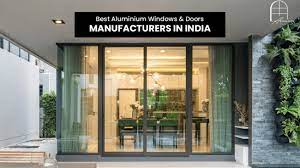Vacuum windows, also known as vacuum-insulated glazing (VIG), represent a cutting-edge technology in the realm of energy-efficient building materials. As the construction industry continually seeks ways to reduce energy consumption and enhance thermal insulation, vacuum glazed windows offer a promising solution. This article delves into the science behind vacuum windows, their benefits, applications, and future prospects.
The Science Behind Vacuum Windows
At the core of vacuum windows is the concept of reducing heat transfer. Traditional double-glazed windows consist of two panes of glass separated by a layer of air or inert gas like argon. While these gases provide some level of insulation, they are not as effective as a vacuum. A vacuum, which is a space devoid of matter, eliminates almost all modes of heat transfer except radiation.
In vacuum windows, the air between the panes of glass is evacuated, creating a near-perfect vacuum. This setup dramatically reduces the conduction and convection of heat. To prevent the glass panes from collapsing under atmospheric pressure, tiny spacers are placed between them. These spacers are nearly invisible to the naked eye and do not significantly impact the window’s clarity.
Benefits of Vacuum Windows
- Superior Insulation: Vacuum windows provide significantly better thermal insulation compared to traditional double or triple glazing. This improved insulation helps in maintaining a consistent indoor temperature, reducing the need for heating and cooling.
- Energy Efficiency: By minimizing heat loss in winter and heat gain in summer, vacuum windows contribute to lower energy consumption. This not only reduces energy bills but also decreases the carbon footprint of buildings.
- Noise Reduction: The vacuum layer in these windows also acts as an excellent sound barrier, making them ideal for use in noisy urban environments.
- Slim Profile: Despite their superior performance, vacuum windows are typically thinner and lighter than traditional triple-glazed windows. This makes them easier to install and more compatible with existing window frames.
- Durability: The materials used in vacuum windows are designed to withstand the test of time. With proper sealing, the vacuum between the panes can be maintained for decades.
Applications of Vacuum Windows
Vacuum windows are versatile and can be used in various settings, including:
- Residential Buildings: Homeowners can benefit from the energy savings and comfort provided by vacuum windows.
- Commercial Buildings: Offices, hotels, and other commercial spaces can see significant reductions in energy costs.
- Historical Buildings: Vacuum windows can be an ideal solution for retrofitting old buildings where maintaining the original aesthetic is crucial, but modern insulation standards are desired.
- Transport: They can also be used in vehicles, trains, and airplanes to enhance thermal and acoustic comfort.
Future Prospects
As technology advances, the cost of producing vacuum windows is expected to decrease, making them more accessible to a broader market. Research is ongoing to further improve their performance and durability, and to develop innovative applications.
Moreover, the growing emphasis on sustainable building practices and energy efficiency regulations worldwide will likely drive the adoption of vacuum windows. Governments and environmental organizations are increasingly recognizing the importance of advanced glazing technologies in achieving energy conservation goals.
Conclusion
Vacuum windows stand at the forefront of energy-efficient building technology. Their ability to provide superior insulation, reduce energy consumption, and offer noise reduction makes them an attractive option for modern construction. As production costs decrease and technology advances, vacuum windows are poised to become a standard feature in both residential and commercial buildings, contributing significantly to global energy efficiency and sustainability efforts.


